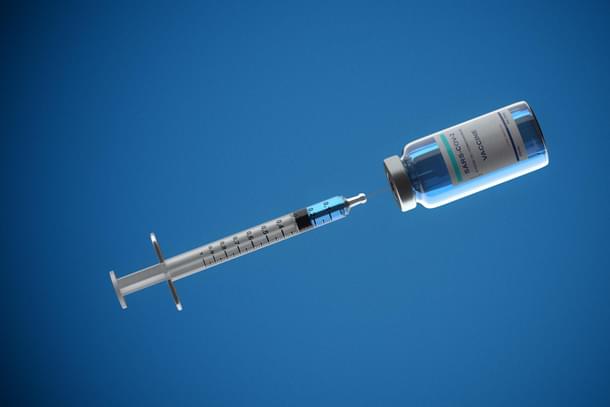Science
Science Simplified: What Is The “T Cell Response” In COVID-19 Vaccine Trials And Why It Is Key To Coronavirus Fight
Karan Kamble
Jul 22, 2020, 10:37 AM | Updated 10:37 AM IST
Save & read from anywhere!
Bookmark stories for easy access on any device or the Swarajya app.


As the race to the coronavirus vaccine intensifies and results of early human testing of various vaccine candidates emerge, one medical term is being used often – “T cells” or, more specifically, the “T cell response”.
On 20 July, when promising data emerged from early human trials of Oxford University–AstraZeneca’s vaccine candidate, there was a mention of it inducing a “T cell response” in addition to producing antibodies.
Preliminary results from a phase 1/2 trial involving 1077 healthy adults found that vaccine induced strong antibody & T cell immune responses up to day 56 of the ongoing trial. These responses may be even greater after a 2nd dose, according to a sub-group study of 10 participants
— The Lancet (@TheLancet) July 20, 2020
T cell responses targeting SARS-CoV-2 spike protein were markedly increased (in the 43 participants studied), peaking after 14 days. The T cell response did not increase with a 2nd dose of the vaccine, which is consistent with other vaccines of this kind
— The Lancet (@TheLancet) July 20, 2020
Similarly, specific T cell response was registered in early trials of vaccine candidates developed by Pfizer–BioNTech and Moderna.
So, what is the T cell? And how does it work to fight infections?
The T cells are a type of white blood cells. They come into play after our body’s first line of defence – the innate or natural immune system – has already got to work on warding off the invading pathogen, whether it’s a bacteria, virus, or parasite.
They are, therefore, part of the adaptive immune response of the body, mounted in addition to the activation of the innate immune system. One can see them as forming the second line of defence.
In contrast to the innate immune response, the adaptive immune response takes a longer time to get on and generate appropriate responses.
Upon exhaustion of antigens or clearance of invading organisms, the majority of these T cells die by neglect. However, a small number of them survive, remaining dormant until the body is exposed to a similar pathogen.
T cells are of two kinds.
1. T helper cells (Th): This group of T cells generally helps B cells in mounting antibody responses. Antibodies are essential for eliminating toxins, extracellular parasites, and neutralising viruses. Another subset of T cells helps macrophages or phagocytes to eliminate harbouring intracellular pathogens. These cells are often called CD4+ T cells.
2. Cytotoxic T cells (Tc): These cells are in continuous surveillance mode to find virally infected cells. Once they locate the infected cells, they kill them. Often they are called CD8+ T cells.
Besides all these operations, the T cells let your immune system know that it’s time to pull up its socks and fight the infection.
The hope is that the invading pathogen is eventually defeated. Once that happens, the body returns to normal but some of the generated T and B cells live on in our body, dormant, but keeping a silent watch for the next time a similar enemy returns, at which time it wakes back up to fight.
Only this time, it is stronger and faster at dealing with the invading threat. This speaks to the importance of the T cell response.
T Cells and COVID-19
At the start of the outbreak, no one had been infected previously with the novel coronavirus, SARS-CoV-2. Naturally, there were no acquired T and B cells with memories specific to this virus. But as of writing this report, over 14.5 million people worldwide have been infected, and as per the general understanding of immune responses, T cells should be up and running in them.
The uninfected people, on the other hand, will not have the SARS-CoV-2-experienced T cell weapons.
However, it must be noted that recent studies are revealing that previous coronaviruses – SARS-CoV-2 is not the first coronavirus known to us – may have elicited a T cell response from back in the day and which are getting detected currently in many individuals.
Much is to be learnt still about how the adaptive immune system is responding to the novel coronavirus, and active research is looking into it.
But there is an understanding emerging that in addition to the production of antibodies, whose strength and duration of combat against the virus are uncertain, stimulating a T cell response is important to fighting coronavirus.
Collective literature indicates that both neutralising antibodies and T cell responses may be required for vaccine efficacy against the SARS-CoV-2.
Several reports suggest that while antibodies are being generated in patients, they are relatively short-lived, which means that the memory response is either not generated and/or not adequate. Thus, efforts should be made to formulate a vaccine that generates B and T cell memory responses.
In the coming weeks and months (this is going to take a while), as more and more vaccine candidates are put through trials and more data sets emerge, this aspect of the “T cell response” should be something to keep an eye on.
Professor Gobardhan Das contributed to this report with critical facts and other inputs. He is Professor at the Center for Molecular Medicine, JNU, and tweets at @dasgobardhan.
Karan Kamble writes on science and technology. He occasionally wears the hat of a video anchor for Swarajya's online video programmes.





